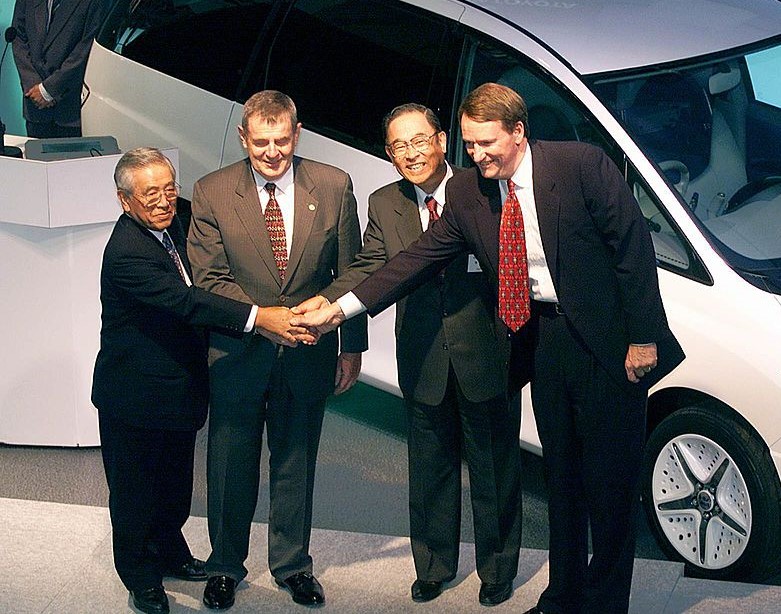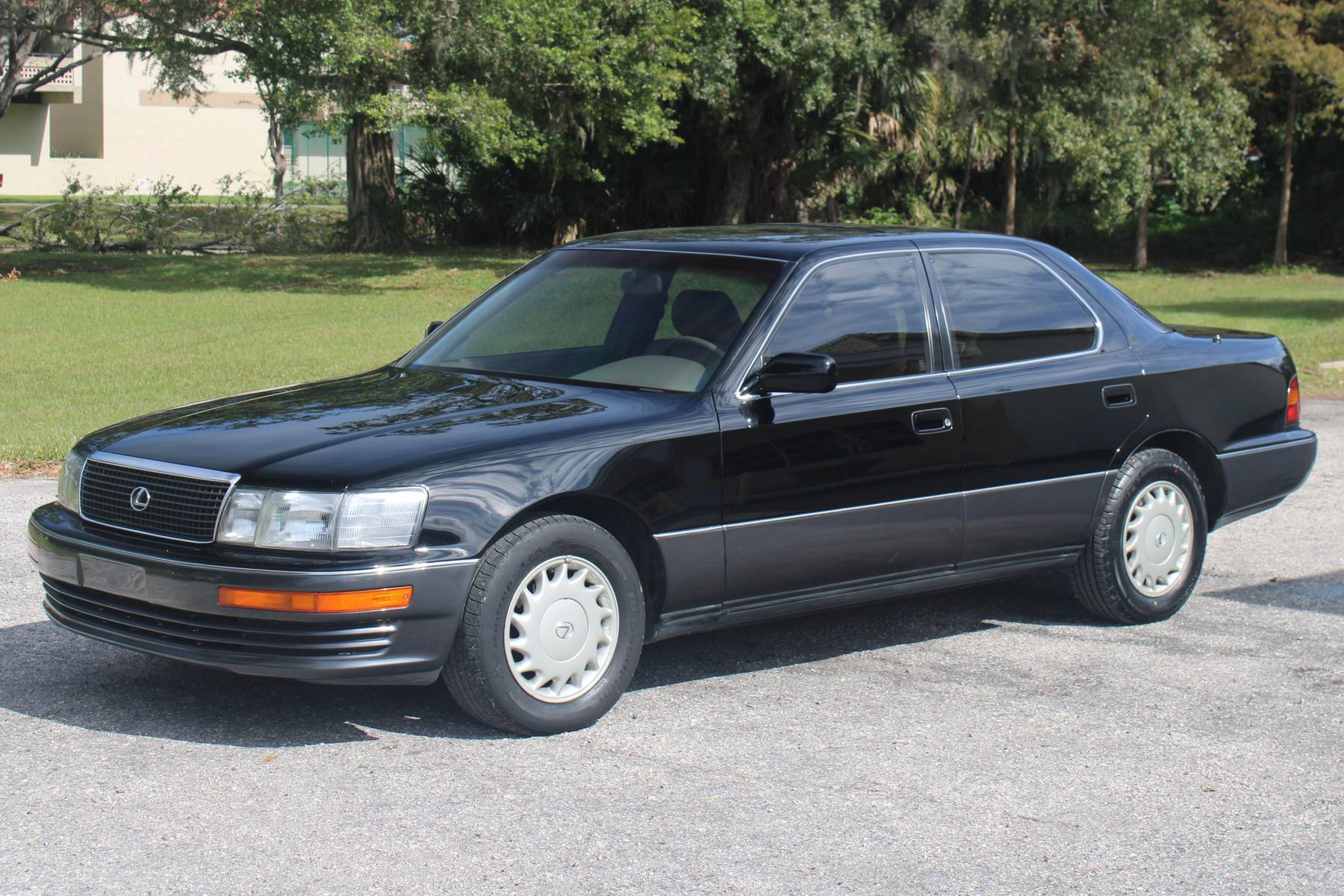Editor’s Note: Roger Schreffler moved to Japan in 1984 to work as a business journalist mainly covering the Japanese auto industry. He began contributing to WardsAuto in the late 1990s. In 1999, he was president of the Foreign Correspondents’ Club of Japan. He currently resides in Providence, RI, where he works as a special assignments correspondent for WardsAuto and Wards Intelligence.
Shoichiro Toyoda, president of Toyota Motor from 1982 to 1992 and chairman from 1992 to 1999, passed away Feb. 14. The eldest son of Toyota founder Kiichiro Toyoda was 97.
Toyoda (who held a doctorate in engineering) was one of the first auto executives I interviewed upon moving to Japan in the mid-1980s. We would meet twice.
Little did I realize then that I was in the presence of one of the auto industry greats. He would be inducted into the Automotive Hall of Fame in 2007, the eighth Japanese so honored.
We began by discussing trade, then and now a hot-button issue.
In 1985, Japan had exported a record 6.7 million vehicles, including 3.1 million to the U.S., also a record high. Toyoda at the time was president of Toyota Motor, having held previous positions including president of Toyota Motor Sales, executive vice president and senior managing director.
Japanese automakers in 1981 had agreed to limit exports for several years to give American manufacturers, which had reported record losses the previous year, time to prop up their businesses. The 1979 energy crisis and the recession that followed hit Detroit hard as the then-Big Three couldn’t compete with the Japanese in small fuel-efficient cars.
I pressed Toyoda about Japan’s growing trade surplus. U.S. imports, trending in the opposite direction of exports, fell in 1985 to the lowest levels since the early 1960s, while in dollar terms the Japanese surplus would grow to historically highs following the 1985 devaluation of the dollar.
He disagreed with my premise that Japan was doing something improper. Polite but firm, he pointed out that, “The reasons for keeping the export restraints have disappeared,” citing the apparent “recovery” of the U.S. auto industry and reduced unemployment levels.
Of course, Toyoda was right about most of the issues we discussed with the advantage of hindsight on my part. By the 1980s, the Big Three weren’t really interested in selling cars in Japan. They wanted Japanese automakers to reduce their sales in the U.S. That was their bottom line.
And although he didn’t predict it, the appreciation of the yen, following devaluation of the dollar, made it cheaper for Japanese automakers to transplant more of their operations to North America and Europe. It was just arithmetic.
(left to right) Shoichiro Toyoda, then-General Motors CEO John Smith, then-Toyota President Fujio Cho, then-GM President Rick Wagoner announce GM-Toyota technical cooperation agreement at 1999 Tokyo auto show.
The most memorable comment from those interviews came when I asked him about Toyota’s “conservative” approach to management. Keep in mind the automaker was just gearing up for a major overseas expansion into North America and Europe, which would be one of Toyoda’s legacies.
He responded by quoting a Japanese proverb: “Ishibashi wo tataite wataru,” or, “Tap a stone bridge before crossing to make sure that it’s safe” – an expression of caution. To press his point, he said “Toyota no bai wataranai (‘In the case of Toyota we often don’t cross’),” then laughed heartily at his own joke.
But the reality was different. Although following both Honda and Nissan into the U.S. market as a manufacturer and Honda into Canada, Toyota would do it, as always, Toyota’s way (as a 2003 book about the automaker was titled), first entering in 1984 by way of a car-producing joint venture with General Motors in California. After gaining experience through the JV, Toyota would announce plans in December 1995 to invest $1.2 billion in North American production: $800 million in Kentucky and $400 million in Ontario.
Several years later, the automaker committed £700 million ($844 million) to build cars in the U.K.
There was no turning back. And there was almost no limit to how far Toyota would reach into its deep pockets. The automaker eventually would invest nearly $31 billion in U.S. and Canadian manufacturing, including $25 billion in the U.S., and more than $6 billion in Canada.
During Toyoda’s tenure as company president, global production grew from 3.2 million to 4.7 million units, with overseas production accounting for 16% of the total by 1992 when he handed the keys of management to his younger brother, Tatsuro. That share now stands at 65%, virtually immunizing the automaker from exchange-rate fluctuations.
Toyota introduced the Lexus luxury brand in 1989. In 1992, the year Toyoda moved from the presidency to the chairmanship, the brand’s LS400 flagship (pictured, below) would score No.1 in both the J.D. Power customer satisfaction and initial quality surveys, beating all of the major European and American luxury brands.

I would have two more quality-time meetings with Toyoda. In 1994, I hosted him at a luncheon at the Foreign Correspondents’ Club of Japan. He had been newly appointed as chairman of the influential Japan Business Federation and, breaking tradition, chose to give his inaugural address to the foreign press.
Toyoda made one request, actually a demand – that I not mention Toyota in my introduction, but say he was representing “all” Japanese industry.
Rather than protest, since he wouldn’t have changed his mind, I played along and mentioned three or four times in my introduction that he was president of a “not-so-small company” in Aichi prefecture. He laughed, the joke on him this time. It was all in good fun.
Nearly 20 years later in 2012, we met again at a reception of ITS-Japan of which he was honorary chairman. He had been the driving force behind the organization’s founding in 1994 when it was known as VERTIS – the Vehicle, Road and Traffic Intelligence Society. The organization’s focus: future driving systems, including autonomous vehicles.
He waved me over, and we would have a pleasant conversation focused in part on his son's testimony before Congress two years earlier when Akio, still in his first year as Toyota president, would face probably the biggest crisis of his presidency involving the sudden acceleration of Toyota and Lexus cars and nearly 100 deaths in the U.S. alone.
Standing alongside Toyoda was Keiko Morita, Toyota’s longtime interpreter. Having watched the hearing in real-time and feeling several members of Congress had crossed a line with their harsh treatment of Akio, I mentioned that Morita had saved the day by translating their questions fully into Japanese before Akio, who speaks English, would respond in Japanese. She then translated his responses back into English.
The net result: fewer questions, especially gotcha questions, and Akio would make no slips of the tongue.
Toyoda was still honorary chairman of ITS-Japan at the time of his passing.
Toyota has announced it will hold a memorial service for Toyoda April 24 in Tokyo. He is survived by his wife, daughter and son, Akio, who less than three weeks before his father’s death announced he would be stepping up to the chairman’s spot.





